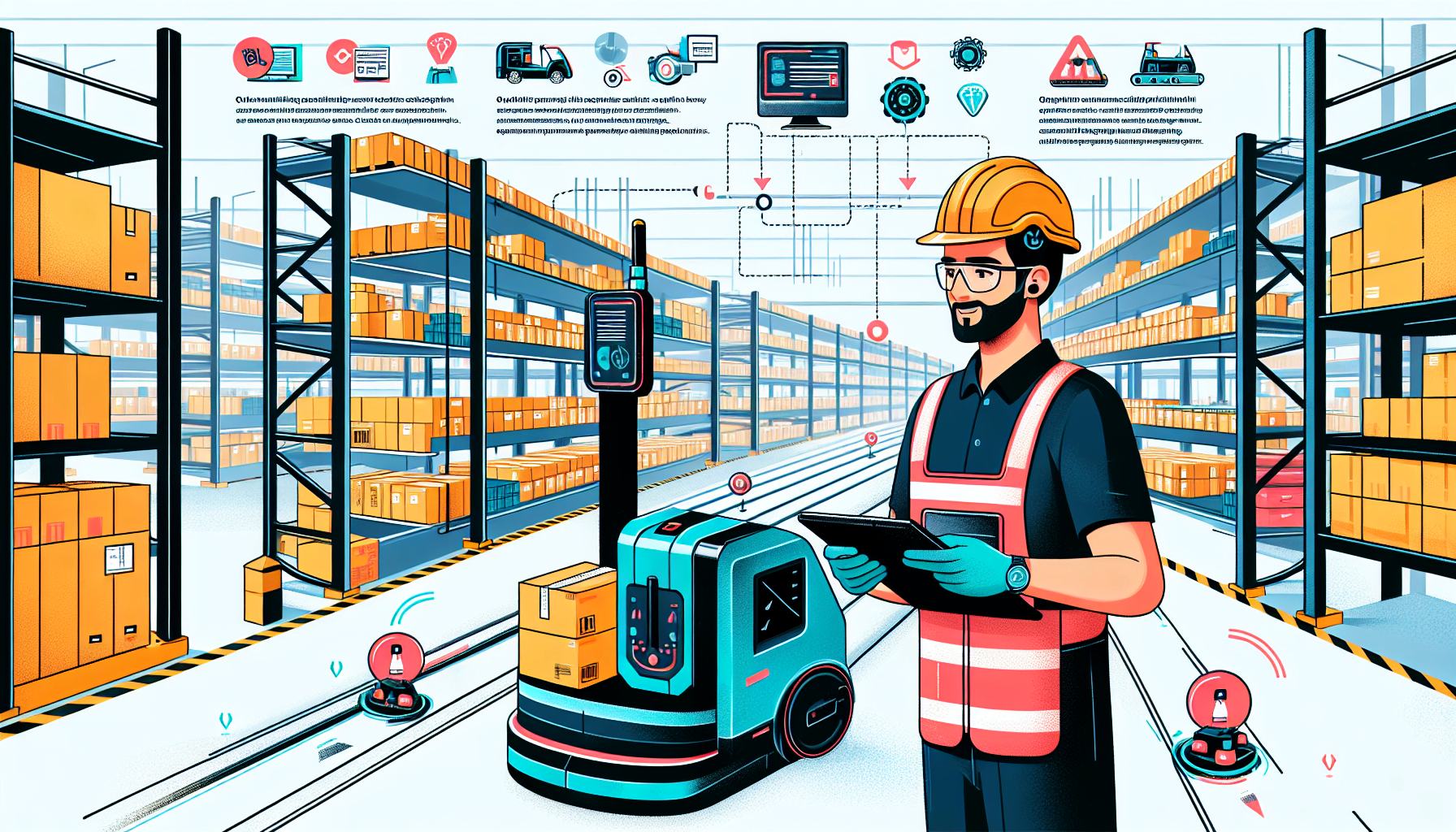In today’s rapidly evolving world of logistics and warehousing, it is imperative for businesses to embrace automation and technology in order to stay competitive. One such technology that has revolutionized warehouse operations is the use of Automated Guided Vehicles (AGVs). AGVs are autonomous vehicles that are designed to navigate warehouse environments and perform various tasks, such as material handling and transport, without the need for human intervention.
Benefits of AGV Deployment
AGVs offer numerous benefits to warehouse operations, making them an ideal choice for businesses looking to optimize their warehouse processes. Here are some of the key benefits of AGV deployment:
- Increased Efficiency: AGVs can significantly improve the efficiency of warehouse operations by automating various tasks, such as picking and placing goods, inventory management, and order fulfillment. They can operate 24/7, without the need for breaks or shifts, resulting in faster and more streamlined operations.
- Improved Safety: AGVs are equipped with advanced navigation and obstacle detection systems, making them safe to operate in crowded warehouse environments. They can navigate narrow aisles, avoid collisions with people and obstacles, and operate in hazardous areas without putting human workers at risk.
- Enhanced Productivity: By taking over repetitive and mundane tasks, AGVs free up human workers to focus on more complex and value-added activities. This not only improves overall productivity but also boosts employee morale and job satisfaction.
- Cost Savings: AGVs can help reduce operational costs in multiple ways. They eliminate the need for manual labor, which can lead to significant cost savings in the long term. Additionally, AGVs can optimize workflows, reduce errors, and minimize inventory holding costs.
Best Practices for AGV Deployment
While AGVs offer immense potential for warehouse optimization, deploying them successfully requires careful planning and implementation. Here are some best practices to consider when deploying AGVs in your warehouse:
- Conduct a thorough assessment: Before introducing AGVs into your warehouse, evaluate your current operations and identify areas where AGVs can be most effective. Consider factors such as layout, inventory flow, equipment compatibility, and the type of goods being handled.
- Choose the right AGV type: There are different types of AGVs available, each suited for specific tasks and environments. Select an AGV type that aligns with your warehouse requirements and can seamlessly integrate with existing infrastructure, such as racks, conveyors, and other automation systems.
- Implement a robust communication system: AGVs operate in conjunction with warehouse management systems (WMS) and other equipment. Establish a reliable communication network to ensure seamless integration and coordination between AGVs, WMS, and other warehouse automation systems.
- Provide proper training: Training your staff on how to work with AGVs is essential for a successful deployment. Educate them on AGV safety protocols, how to interact with AGVs, and how to troubleshoot basic issues. This will help create a harmonious working environment between humans and AGVs.
- Monitor and optimize performance: Regularly monitor AGV performance and collect data to identify areas for improvement. Analyze metrics such as throughput, cycle times, and error rates to optimize AGV routes, fleet size, and overall warehouse operations.
- Maintain and service AGVs: Regular maintenance and servicing are crucial to keep AGVs in optimal condition. Develop a comprehensive maintenance plan to ensure AGVs are operating at peak performance and minimize downtime due to breakdowns.
Implementing these best practices will help ensure a successful and efficient AGV deployment in your warehouse. By leveraging the benefits of AGVs, businesses can optimize their operations, enhance productivity, and ultimately improve their bottom line.
If you’re interested in learning more about AGV deployment and how it can benefit your warehouse operations, visit HCO Innovations. As a prominent provider of warehouse optimization solutions, they specialize in enhancing safety, productivity, efficiency, and cost-effectiveness within warehouse operations.

